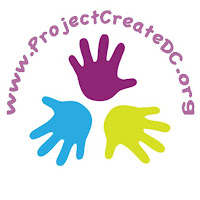A look back at Youth Homelessness Awareness Month and the Year Ahead for District Youth
In the summer of 2007, the United States Congress officially declared November as National Homeless Youth Awareness Month. It’s noteworthy that a 16-year-old youth that year who was experiencing homelessness would now be a 24-year-old, either fully independent, on the precipice of transitioning to self sufficiency, or sadly having fallen through the cracks will be moving into an adult serving system. 9 years after the institution of National Homeless Youth Awareness Month, that is unconscionable. Here at DCAYA, this reinforces the urgency to act and ensure we are cutting off the pipeline into housing instability and homelessness. That said, it also allows us to acknowledge the progress our community has made.
What’s Been Done About Youth Homelessness in DC?
In kicking off this awareness month
three years ago on this blog, we noted that the need for more action around youth homelessness in the DC was very real. The “invisibility” of homeless youth – mostly young people “couch surfing” from place to place – meant that there was little public awareness or political will to be found for doing right by them. In the meantime, the District’s overall capacity for serving homeless youth was at only 216 beds, with providers reporting high turn-away rates and double-digit waitlists.
Recognizing this, the DC Alliance of Youth Advocates worked diligently with providers and partner advocates to develop and release
A Bold Strategy to End Youth Homelessness in the District of Columbia in October 2013. This strategy called the Mayor, DC Council and city officials to invest in a long-term, data driven, continuum of services that spanned prevention through intervention and into stable independence. Together, the coalition partners calculated that a $10 million commitment was needed to fund prevention, intervention and evaluation for a full year.
As Support Grows, Services Follow in DC…
Council heard the request, and passed the
Ending Youth Homelessness Amendment Act in May 2014, but at a commitment of $1.3 million. The Act mandated and funded a new youth drop-in center, a coordinated intake system among providers (to ensure that there is no “wrong door” for youth seeking support), fifteen new beds for youth in crisis, a street outreach program, and an annual homeless youth census. Since the initial Act was passed, contracts for the mandated services have been awarded to five youth-serving, community-based organizations in the District.
At the same time, the needs of particular populations of homeless youth are being better addressed in DC. In February 2014 the DC Council passed
the LGBTQ Homeless Youth Reform Amendment Act by an almost unanimous vote, mandating that the number of beds for homeless LGBTQ youth be more than doubled from eight to 18, and that the count of homeless youth in the District includes an accurate census of LGBTQ youth. It also funded cultural competency training for all shelter providers to ensure that no matter where a youth makes contact with the system, the staff they encounter are sensitive to their unique needs.
…But Where Will They Be Next November?
While this initial investment to the Ending Youth Homelessness Amendment Act was critical, we're still working diligently to understand what else is needed from a data informed perspective.
To this end, the first publicly funded, youth census funded under the Act was completed in August 2015, with data expected to be released this month. Advocates in the meantime are continuing to collect data on homeless youth with the newly established Coordinated Entry System. Through the collected data, advocates, community-based providers, and DC agencies will have a greater understanding on the investments needed to stabilize homeless youth and guide them onto a path of self sufficiency.
While the successes of recent years have led to a more youth-friendly system – one that has become a little better at meeting the demand and connecting youth to appropriate services – it is almost certain the data will tell us that we’ll need to ramp up funding in the years ahead if we are to truly stick to a bold strategy that emphasizes prevention and meaningful interventions to end youth homelessness in the District.
Joey Gavrilovich is a Senior Policy Analyst at the DC Alliance of Youth Advocates. For more information, visit our website and don't hesitate to reach out with any questions.
























